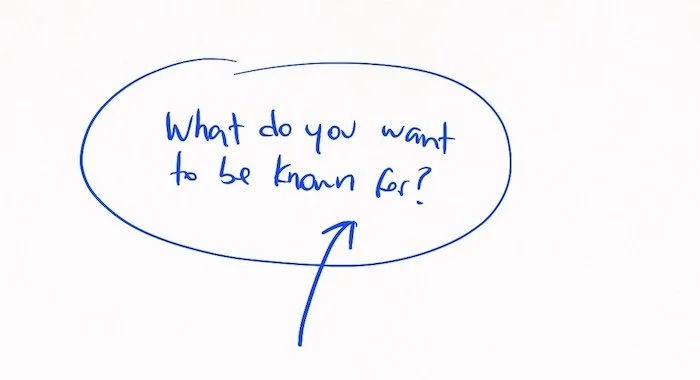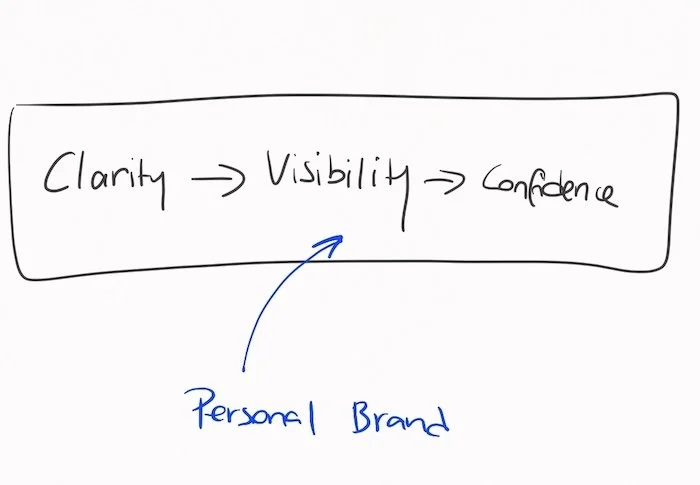The LinkedIn visibility pyramid (build a personal brand that gets you found by people and AI)
Personal branding isn’t about posting more.
And it’s definitely not about chasing the algorithm.
The way we are discovered, evaluated, and understood online has fundamentally changed and with AI accelerating this shift, your personal brand is no longer just a communication layer.
It’s a search signal.
Whether someone looks you up on LinkedIn, sees your name in a Slack community, searches a question in Google, or asks an AI tool for expert advice, your online identity shapes whether you appear, how you appear, and whether you’re trusted.
Your presence shapes your discoverability.
But you don’t build that identity by posting more.
You build it by being strategic about how you show up.
This is where the personal branding pyramid comes in.
It’s the framework I use with leaders, consultants, founders and teams to build a presence that works on LinkedIn, in search, and inside AI systems.
This is the framework I use with clients, leaders, consultants, founders, teams, and organisations, to help them build a strategic presence online.
The pyramid has three layers: Clarity → Visibility → Confidence.
And each one plays a role in modern discoverability.
1. Clarity: The Foundation of your personal brand
People often want to jump to content:
“What should I post?”
“How often?”
“What format works best?”
But the question underneath all of this is much simpler: What do you want to be known for?
Before content comes clarity.
Before visibility comes intention.
Before authority comes positioning.
When I work with clients on clarity, whether in a power hour or a longer-term strategy, this is always the starting point.
Clarity is the foundation that shapes all visibility work.
It answers the questions AI, search engines, and people are all trying to figure out:
What do you want to be known for?
Which topics should your name be associated with?
Who needs to hear from you?
What value do you bring?
Where do you want visibility to take you?
It covers your:
Positioning: the space you occupy in someone’s mind
Message: the ideas or problems you want to be associated with
Audience: who needs to hear from you
Objectives: why you want visibility in the first place
Without clarity, your content feels scattered.
With clarity, every signal you create reinforces your expertise.
This is essential for humans and for AI systems that learn who you are by reading your patterns, language, and topics.
Clarity tells the world,
“This is what I do. This is where I add value.”
2. Visibility: Showing up with intention
Once you know what you want to be known for, visibility becomes infinitely easier (and infinitely more strategic)
Visibility isn’t about posting every day.
It’s about showing up consistently and intentionally in ways that reinforce your message.
Visibility on LinkedIn includes:
Sharing content in your core topics
Commenting strategically to expand reach
Joining relevant conversations
Being active where your audience is active
Optimising your profile for LinkedIn search
Staying consistent with your themes
These are the exact visibility habits I help clients build in my LinkedIn coaching sessions.
In other words, it’s Content, Engagement, Networking, Optimised profiles that all lead to the same end goal.
Even better, visibility on LinkedIn and other social platforms is now directly connected to AI search visibility:
AI models interpret your topic consistency
They read your content as authority signals
They evaluate your network and community
They understand your expertise through repetition
→ Visibility creates the digital footprint that AI, search engines, and people rely on.
Visibility isn’t about being everywhere.
It’s about being findable.
3. Confidence: Authority built over time
Confidence is the top of the pyramid for a reason.
It can only exist when the layers beneath it are solid.
When you are clear on your message and consistent in your presence, confidence becomes the natural next step. It’s expressed through:
Your tone
Your opinions
Your willingness to lead conversations
Your ability to share without second-guessing
Your comfort in your niche
This is where your authority strengthens, not because you’ve claimed it, but because you’ve demonstrated it.
A big part of my 1:1 work is helping clients grow this stage the confidence to express their ideas clearly and consistently.
Confidence also strengthens:
AI authority signals
LinkedIn post performance
Thought leadership
Community engagement
Reputation inside your industry
It is the proof that your personal brand is working.
It’s when your ideas start getting repeated, referenced, or requested.
It’s also what makes your personal brand felt, not just seen.
Why this pyramid works for LinkedIn (and for AI discovery)
We often think of personal branding as a form of storytelling or a vanity exercise.
Today, it’s much more structural than that.
Your personal brand influences:
SEO (entity-based search, EEAT, branded queries)
AI discovery (how AI tools summarise your expertise)
Social search (LinkedIn relevance, topic mapping)
Reputation (how others describe you)
Opportunities (speaking, partnerships, clients)
Your personal brand is becoming one of the most important inputs into how both humans and machines understand who you are.
And that’s why the pyramid matters:
It’s not just a visibility model.
It’s a discoverability model.
This is why so much of my work focuses on strategic visibility rather than tactics or trends.
Clarity → tells the world how to index you
Visibility → creates the signals AI and humans can learn from
Confidence → builds authority that compounds over time
This is how you build a presence that is strategic, sustainable, and future-proof.
Not louder.
Just clearer.
More consistent.
More confident.
More discoverable.
If you’re working on your personal brand this year and want guidance, this is exactly the work I do through my 1:1 LinkedIn coaching, strategy sessions, and power hours.




